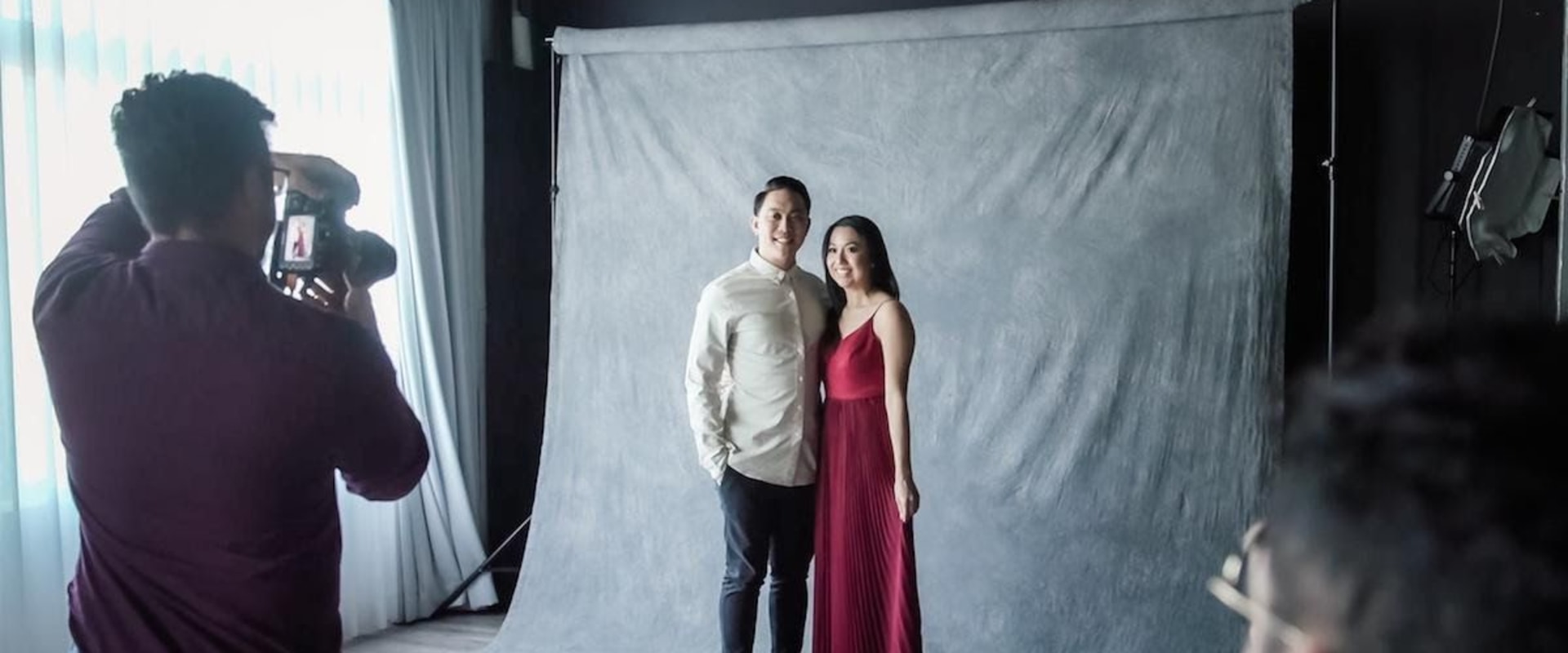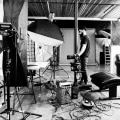Are you looking for a professional photographer to capture a special moment in time? Whether it's a wedding, graduation, or family portrait, it's important to communicate your needs and expectations to the photographer beforehand. But how do you go about communicating with the photographer? In this article, we'll discuss the best practices for ensuring that your photo session goes off without a hitch.
Setting Expectations with the Photographer
– When communicating with a photographer, it's important to discuss the project's goals, timeline, budget, and any other details before the project begins. This helps ensure that both parties are clear on expectations and that everyone involved is on the same page. It's also important to be honest and upfront about any limitations or restrictions that may affect the project.Choosing the Right Photographer for Your Project
– It's important to do your research when selecting a photographer for your project.Look at their portfolio, contact references, and ask questions about their experience and process. You should also make sure that you are comfortable with the photographer's style and approach before making a decision.
Scheduling Your Shoot
– Once you have chosen a photographer, it's time to discuss availability and location. Be sure to discuss any permits or permissions that may be needed for the shoot as well as any special requirements such as travel or equipment. It's important to be flexible and open minded when scheduling a shoot.Preparing for the Shoot
– Before the shoot begins, it's important to make sure you have all of the necessary props and materials ready.Discuss any special requirements or requests with the photographer ahead of time so that there are no surprises on the day of the shoot.
Discussing Post-Production Work
– After the shoot is complete, it's important to discuss post-production work such as retouching, editing, and image delivery. Be sure to discuss any expectations or deadlines with the photographer so that you can ensure a timely delivery of your images.Maintaining an Open Dialogue
– It's important to maintain an open dialogue with your photographer even after the shoot is complete. Follow up after the shoot to provide feedback and ask questions about any post-production work that may need to be done. This helps ensure that both parties are satisfied with the end result.Scheduling Your Shoot
When communicating with your photographer, scheduling is a crucial element for success.Before you even book the photographer, it's important to make sure they are available on the day and time you need them. Be sure to discuss what times they are available, and how much flexibility they have for rescheduling if needed. Location is also an important factor to consider when communicating with your photographer. You should discuss if they are willing to travel to the desired location, or if you will need to book a studio space or other venue.
Make sure you are aware of any additional costs associated with the location. Lastly, discuss the length of the shoot with your photographer. Many photographers will offer different packages based on the number of hours needed, so make sure you are clear on expectations and how long you'll need the photographer for.
Choosing the Right Photographer
When it comes to finding the right photographer for your project, it's important to do your research. Look at the photographer's portfolio and get a feel for their style and the types of shots they specialize in.Make sure that their aesthetic is compatible with what you're looking for. Also consider their experience, as well as their ability to meet any special requirements you may have. In addition to evaluating the photographer's work, you should also ask them questions about their process and their availability. Make sure that they understand what your expectations are and that they can accommodate them. Additionally, it's important to review any contracts or agreements they provide to make sure you understand what is expected of you and the photographer. Finally, it's important to discuss payment terms in advance.
Be sure to agree on a fair rate and payment schedule that works for both you and the photographer. This will help ensure that you don't end up with any unexpected costs or delays.
Discussing Post-Production Work
Discussing Retouching, Editing, and Image DeliveryOnce the photos have been taken, it's time to discuss post-production work. This includes retouching, editing, and image delivery. It's important to make sure that everyone is on the same page about the expectations for the final product.Ask the photographer what type of retouching is included in the package and what types of edits can be made. Be sure to inquire about turnaround time for image delivery as well. It's also important to discuss how the images will be delivered. Some photographers prefer to deliver digital versions of the images via a file-sharing service or USB drive. Others may prefer to deliver physical prints or a CD-ROM.
No matter which method you choose, make sure that you understand the terms of delivery and that you are comfortable with the process.
Maintaining an Open Dialogue
When working with a professional photographer, maintaining an open dialogue is essential in order to ensure that you and the photographer are both on the same page. It is important to be able to communicate your ideas clearly and accurately in order to get the best results from your project. Additionally, it is important to follow up after the shoot and provide feedback on the photos taken. This will help ensure that the photographer is aware of what you want, and can adjust accordingly if needed. Once the shoot has been completed, it is important to follow up with the photographer.This can be done by sending a thank you note or email to show your appreciation for their work and to provide them with any feedback you may have. This feedback can include anything from comments on how a certain pose or shot looks, to suggestions on how a particular photo could have been improved upon. This communication will help ensure that the photographer is aware of what you are looking for and can adjust accordingly. In addition to providing feedback after the shoot, it is also important to keep in contact with the photographer throughout the project. This way, they are aware of any changes or updates that may be necessary, and can adjust their shooting schedule accordingly.
This open dialogue will also help make sure that everyone involved in the project is on the same page and working towards a common goal.
Preparing for the Shoot
In order to get the most out of your collaboration with a professional photographer, it is important to prepare for the shoot beforehand. This involves gathering any props that may be necessary for the project, and discussing any special requirements with your photographer. When gathering props, it is important to think about what elements you want to bring to the shoot. Depending on the type of project, this may involve bringing clothing, furniture, or accessories.It is also important to consider the colour scheme and texture of the items you are bringing. Be sure to communicate this information with your photographer in advance so they can make sure they have everything they need. In addition, it is important to discuss any special requirements with your photographer before the shoot. For example, if you are wanting a specific style of photo, it is important to inform your photographer so they can make sure they have the right gear and techniques to capture this. Making sure you are both on the same page before the shoot will ensure that you get the results that you want.
Setting Expectations
Before you start working with a professional photographer, it’s important to set expectations.This includes discussing the scope of the project, any potential challenges or obstacles, and the timeline for completion. By setting expectations upfront, you can ensure that both you and the photographer understand the project requirements and are on the same page. When communicating with your photographer, be sure to provide as much detail as possible. Describe the project in detail, including any specific shots you may need and any other special requests.
For example, if you are shooting a wedding, let the photographer know how many people will be in attendance and how much time you will need for each shot. Additionally, provide an estimated budget so that the photographer can make sure that they have the necessary resources to meet your needs. In addition to being clear about your project requirements, be sure to discuss potential challenges or obstacles that could arise during the shoot. For instance, if you’re shooting outdoors, let the photographer know if there is a chance of inclement weather so they can prepare accordingly.
It’s also important to discuss any deadlines or timelines that need to be met for the project. By setting expectations upfront, you can avoid any potential misunderstandings or conflicts down the line. Finally, it’s important to keep an open dialogue with your photographer throughout the process. Be sure to check in regularly and provide feedback on their progress. This will ensure that both you and the photographer remain on track and that any issues can be addressed quickly and efficiently.
Communicating effectively with a professional photographer is essential in order to get the best possible results from your collaboration. By setting expectations, choosing the right photographer for your project, scheduling your shoot, preparing for the shoot, discussing post-production work, and maintaining an open dialogue, you can ensure that you're getting the most out of your experience.




